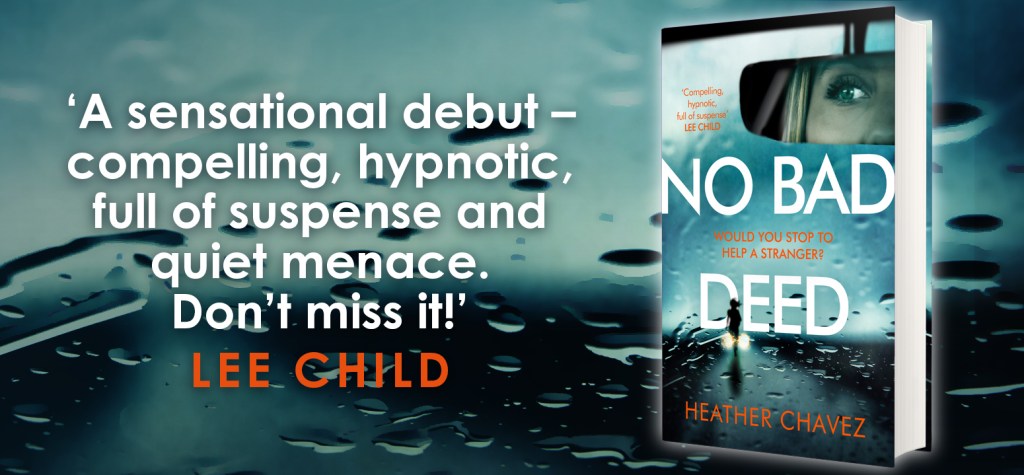The Motive: Heather Chavez talks about the inspiration for NO BAD DEED

Heather please could you give us a summary of what NO BAD DEED is about?
Driving home one night, Cassie Larkin sees a man and woman fighting on the side of the road. After calling for help, she steps in, leading the attacker to warn her: “Let her die, and I’ll let you live.” Veterinarian Cassie isn’t about to let anyone die. But while she’s examining the victim, the attacker flees in Cassie’s car—which means he now has her address and name, and he knows about her children. The next night, her husband disappears while trick-or-treating with their daughter. Are the events connected? As she searches for answers, Cassie discovers that nothing is as random as it seems, and that she is willing to go to terrifying extremes to save her family.
What inspired you to start writing the novel?
Several years ago, I was picking up my daughter from afterschool care when we saw this boy around 14-years-old walking alone. Suddenly, two other boys rushed him and attacked. The fight ended as quickly as it had started, the boys scattering before I could react. After it happened, I was preoccupied by questions. What should I have done? Would my reaction be different if my daughter wasn’t in the car? What inspired those boys to act so violently? That incident and those questions ultimately inspired the plot of NO BAD DEED.
What has the process of writing been like for you?
Before NO BAD DEED, I wrote a few “practice” novels. It wasn’t until I became a journalist and copy editor, and thus learned how to edit, that I realized the reason those early manuscripts weren’t working. They were first drafts. They hadn’t been properly edited. In contrast, NO BAD DEED started in third-person with three points of view. But after drafting, I realized all the “good” stuff was told from one of the other POVs. It was Cassie’s story, but I was letting two other characters tell it. So when I started draft three, I cut about two-thirds of the book and switched to first-person. Once I made that (painful) choice, the writing flowed.
A split-second decision puts your family in danger. A gripping new thriller for fans of Harlan Coben and Linwood Barclay.
NO BAD DEED is out now







